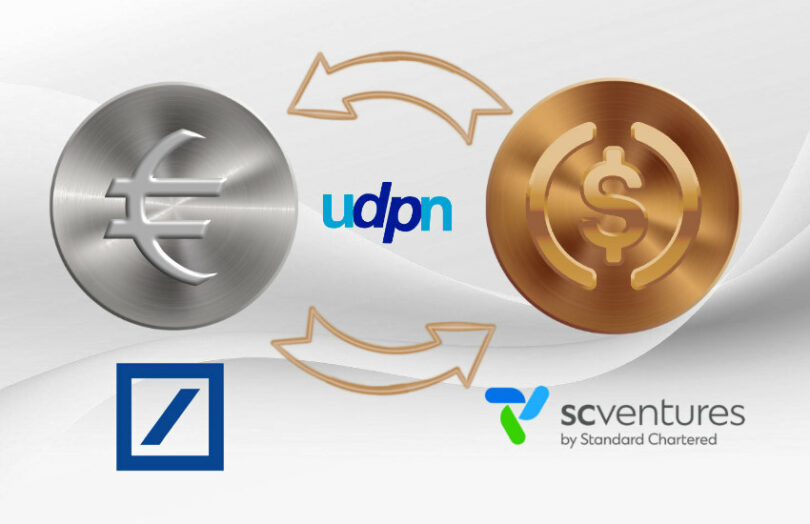Today Standard Chartered’s SC Ventures and Deutsche Bank said they completed the first proof of concept (PoC) for the Universal Digital Payments Network (UDPN). It aims to connect payments across various CBDC and blockchain networks using messages (similar to Swift). Unlike Swift, institutions exchange messages via a permissioned blockchain. Banks are willing to participate because the network only supports regulated tokens and enforces compliance using decentralized identities.
The UDPN was founded by Red Date Technology, the co-founder of the Chinese Blockchain-Based Service Network (BSN). It has been developing UDPN in conjunction with consultancy GFT, and DLA Piper’s digital asset initiative TOKO is also involved. Several additional organizations will participate in network governance through the UDPN Alliance.
UDPN aims to address the adoption barriers faced by current digital currency offerings. As the number of CBDCs, stablecoins and deposit tokens proliferate, they illustrate a lack of interoperability.
Today interoperability between stablecoins is mainly enabled through centralized crypto exchanges. Given the lack of exchange oversight and regulation, that’s not a viable solution for the interoperability of CBDC and deposit tokens.
Plus mainstream adoption of digital currency requires enforcement of know your customer (KYC) and anti money laundering (AML).
UDPN aims to provide a decentralized identity infrastructure to enable compliance and cross chain interoperability by exchanging messages rather than currencies. The currency transactions happen on their native blockchains or infrastructures. That means, via UDPN users can swap a USDC stablecoin on one network for a Euro stablecoin on another or a bank deposit token.
The SC Ventures, Deutsche Bank trial
This is quite similar to the recently completed UDPN PoC. During the trial, Standard Chartered’s SC Ventures made several real time transfers and swaps of synthetic USDC and EURS (Stasis Euro stablecoin) to Deutsche Bank wallets, and vice versa. While SC Ventures used code leveraging UDPN SDKs and APIs, Deutsche Bank used a graphical user interface.
“For Deutsche Bank, the industry pilot on the UDPN platform is an opportunity to investigate and research how we can enable our clients to actively participate in the decentralised future global economy and benefit from applications that are built on top of the network,” said Rafael Otero, CTO & CPO of Deutsche’s Corporate Bank division. “This is the next logical step in the development of financial transactions.”
The StanChart, Deutsche Bank trial is one of a dozen PoCs planned by the UDPN. Other use cases include enabling banks to issue deposit tokens for client use or interbank wholesale settlement. A third PoC supports gasless transactions on a public blockchain.
Messaging for digital currency
Stepping back, one has to ask why UDPN is using messaging for digital currencies. A key benefit of digital currencies is combining the message (the instruction) with the money movement. It makes transactions faster and removes reconciliations. It also enables atomic settlement, meaning either both sides of a transaction fail, or both work. In contrast, with messaging, one side of the transaction can fail.
The answer to why messaging is considered, is the desperate need for interoperability. Blockchain interoperability is a work in progress. For example, bridges enabling public blockchain interoperability have been the source of the majority of losses from hacks and smart contract bugs. That said, there are projects in progress for banks, such as the Regulated Liability Network, though they are nascent.
Swift recently trialed a messaging solution to link CBDCs. Other solutions involve conventional integration using APIs and routing networks such as finP2P.






